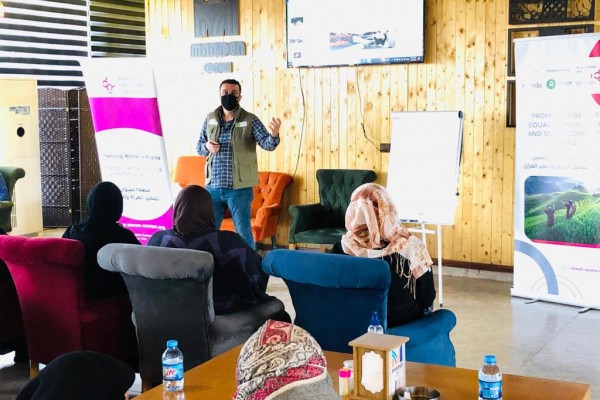Gender Action Learning System GALS
OXFAM-SEWAN

Gender Action Learning System (GALS)
What are GALS?
- GALS is a structured community-led empowerment methodology, aiming at sustainable improvements in livelihoods, gender justice, and constructive influence in decision making, programming, and economic planning.
- It uses simple diagramming tools (trees, circle maps, road journeys), in a system of individual and collective life and livelihood planning and gender advocacy for change, institutional awareness-raising, and changing power relationships.
- Participatory methodology to change unequal power relations that disadvantage women in economic inclusion
- Action to be taken on individual, household, and community levels – changes in power relations in household, community, market/economic system
GALS for Whom?
- For women and men to develop their visions to change and identify strengths, achievements, and collective work to address the gender inequality at the family and community levels
- GALS works with poor, uneducated, and non-organized income women and men
- GALS tools can be adapted to generalize gender mainstreaming in any sector for example economic development, life-enhancing planning, livelihoods, value chain improvement, environmental management, health, etc
The Process of Change:
- collectively identifying issues that harm women`s participation in the economy (e.g. using a problem tree on causes and consequences)
- Discussing strategies for change, setting milestones for change
- Monitoring progress towards achieving the vision
Number of beneficiaries: 1000 individuals, 500 women, 500 men
Targeted areas: 6 areas: Kubba, Sherikhan Alui, Sherikhan Sufli, Hawi al-Kanisa, Abbasiya, and Yarmja.
Number of sessions: 5 sessions
- Dreams:
- What does it mean to be happy?
- What does it mean to live in a happy family and society?
- What are the challenges you face to realize this dream?
2-Different Lives
- How does the life of women differ from that of men?
- How do women's and men's life chances differ?
3-Power and conflict
- Common sources of conflict and the difference in the balance of power in the family and in society
- What are the causes and negative consequences of this conflict?
- Think about change and find appropriate solutions to this conflict?
4-Women’s Economic Participation and Empowerment
- What are the obstacles that women face without obtaining income?
- Think about change and find solutions to these problems?
5-Commitment to Change
- Pledge for change and see a happy future for family and society
